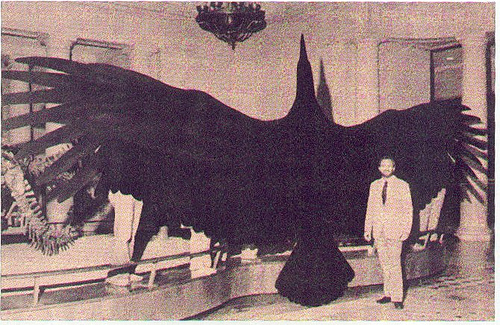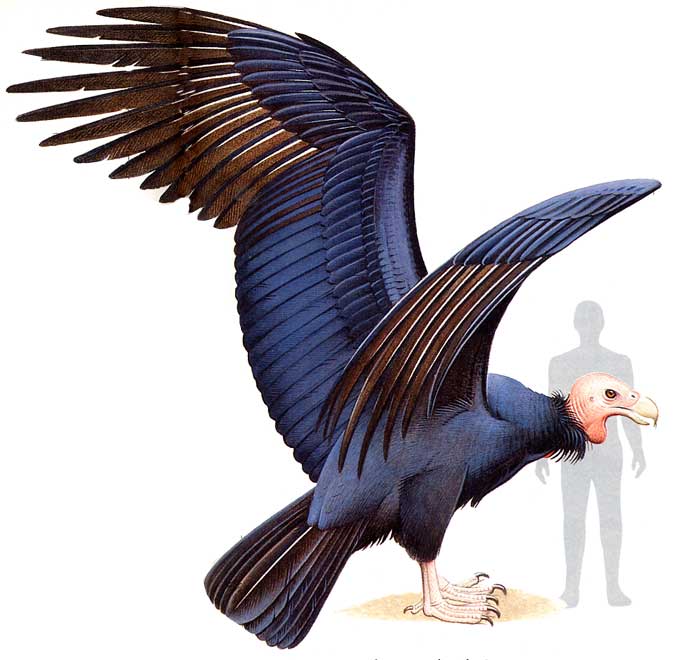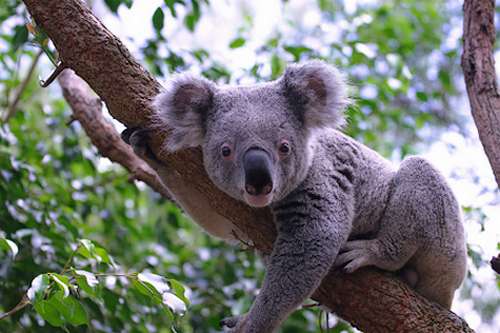@2moymoy
glang copy paste rana.... hilig sa diay kag sand king. . anyways ... thx as info..
@pusang iring
nice dili problem ang over population . ang nkalahi lng nato sa ants . we consume more than we need..
Results 71 to 80 of 259
-
03-09-2010, 11:42 PM #71
-
03-09-2010, 11:46 PM #72
FASTEST ANIMALS AIR LAND and SEA

Peregrine Falcon (Falco peregrinus) about to drop into a stoop where they can hit incredible speeds making them the fastest creatures on earth.
I had to crop this image very heavily as the bird was just a dot in my viewfinder, this is basically the bird full size but I've cropped out the acres of blue sky from around it. I was just really happy to get a shot in focus as it was moving so quickly, this is the only shot in the sequence that came out.

t is known as a marvel of evolution, the wonder of the great earth and the spectacular fastest runner over the land, Cheetah, which uses their slender, long-legged body for speed, can reach up to 70 mph at its top speed (whew!!!) The scientific name of Cheetah is Acinonyx jubatus, usually found in Southern and Eastern Africa, Middle East and in Southern Asia. It can cover or make a pace at about seven-eight meters, with only one foot touching the ground at a time; the cheetah can make a speed of 110 km/h in just a second. Cheetah depends on sight not on smell, when it chase its prey with two points in the stride, feet not touching on the ground; it knock down their prey at once by a suffocating bite to the neck. It chases 3.4 miles at an average speed of 45 mph (72 km/h), last at about 20 seconds; which made it as the fastest animals over the land.
Literally, sailfish has d ark blue color on top, brown-blue laterally, silvery white below. On the sides of the sailfish body has about twenty bars that are made up of bright blue spots. They have elongated bill which has a resemblance of a swordfish and a characteristics of sail (dorsal fin) on top, which often stretches the entire length of the back. Istiophorus platypterus is the scientific name, which has a common size of 7 feet and mostly found in Florida. Most people believe that the Indo-Pacific Sailfish is the fastest creature among all the fishes for it covers or excess in its speed at about 110 km/h (68 mph) over a short period of time. They usually have grown quickly at about 1.2 to 1.5 meters in length and 100 kg in weight. Fisherman and other spectators believed and seen them leap to its height at about 6 m out of the water, and they calculated their swimming speed at 35. 2 km/h.
ark blue color on top, brown-blue laterally, silvery white below. On the sides of the sailfish body has about twenty bars that are made up of bright blue spots. They have elongated bill which has a resemblance of a swordfish and a characteristics of sail (dorsal fin) on top, which often stretches the entire length of the back. Istiophorus platypterus is the scientific name, which has a common size of 7 feet and mostly found in Florida. Most people believe that the Indo-Pacific Sailfish is the fastest creature among all the fishes for it covers or excess in its speed at about 110 km/h (68 mph) over a short period of time. They usually have grown quickly at about 1.2 to 1.5 meters in length and 100 kg in weight. Fisherman and other spectators believed and seen them leap to its height at about 6 m out of the water, and they calculated their swimming speed at 35. 2 km/h.
If a plane can fly in its incredible speed more than the peregrine falcon, that’s totally amazing. If a person can run half of the Cheetah’s speed, she or he would break the record of the fastest creature on earth over the land; and if you can swim like a sailfish and can reach at the same speed? Wow–Everybody are in completely amaze. Anyway, if you can run like a Cheetah, fly like a peregrine falcon and swim like a sailfish, you will be considered as the most magnificent, spectacular and wondrous person living on earth. If you can? Did I hear why not?Last edited by cromagnon; 03-10-2010 at 12:00 AM.
-
03-09-2010, 11:49 PM #73

Nudibranchs, The Most Colorful Creatures in the World
By evad // 17 July, 2008
22 comments
Part of the mollusk phylum, Nudibranchs are the shell-less relatives of the snail and are known for their garish colors. These tiny sea creatures are usually only 2cm - 6cm in length and can be found worldwide. They are able to thrive in any depth of salt water from the deepest darkest ocean floors to warm shallow water.
There are over 3,000 known species of nudibranchs, and scientist estimate that only half have been discovered so far. The creatures soft-body and short life span of 1 year make it possible for many of them to live undetected and vanish from the earth without a trace.

Photo by wildsingapore

Nudibranchs are blind, and the animal relies on smell, taste and feel to navigate their surroundings to find coral, sponges, eggs, small fish, and other nudibranchs to eat.
The nudibranchs most exceptional aspect is their incredible color palettes. Some species' palettes match the dark greens and browns of their ocean surroundings, while others boldly contrast the colors of their habitats. These brilliant colors are an evolutionary development that began when they first shed their shells for other defense mechanisms; either to blend in to their surroundings with camouflage or as warning sign for any animals thinking of dining on a tasty little nudibranch, letting them know of their toxic secretions and stinging cells. As it is, some species dine on toxic sponges which alters and stores the sponges toxic compound in the their bodies and are able to secret them from glands when bothered.

Photo by wildsingapore

Nudibranchs have been studied extensively by scientist looking at their simple nervous systems for clues to learning and memory and their chemical makeup in search of pharmaceuticals.

Photo by wildsingapore



Photo by wildsingapore

Photo by wildsingapore



Photo by wildsingapore

Photo by wildsingapore



Photo by Raymond™

Photo by Raymond™



Photo by Raymond™

Photo by Raymond™



Photo by wildsingapore

Photo by wildsingapore



Photo by Raymond™

Photo by wildsingapore



Photo by wildsingapore

Photo by Raymond™

For more information and to see an amazing set of photos from David Doubilet check out this nudibranchs feature by National Geographic.
-
03-09-2010, 11:49 PM #74
Strongest Creature ... RHINOCEROS BEETLE Oryctes rhinoceros











It can lift 850 times it's wieght! ***(;~)>
- Top 10 Smartest Animals
No. 10 - Rat
No. 9 - Octopus
No. 8 - Pigeon
No. 7 - Squirrel
No. 6 - Pig
No. 5 - Crow
No. 4 - Elephant

Contrary to popular perception, elephants are more than just lumbering giants with big ears and a good memory. In fact, elephants are quite elegant, cultured and curious. They have been known to clean their food and use tools in various ways in the wild, and they can also follow human commands in captivity. Elephants are also extremely caring and empathetic to other members of their group and to other species, which is considered a highly advanced form of intelligence.
No. 3 - Orangutan

The great apes are considered the smartest creatures after humans. Of course, humans are biased in this regard, but the intellectual capacity of the great apes is difficult to deny. Among them, orangutans stand out as being especially gifted in the brains department. They have a strong culture and system of communication, and many have been observed to use tools in the wild. Orangutans live in widely scattered communities and form strong social bonds, which may be the key to their advanced cognitive skills. Females remain with their young for many years, teaching them all they need to survive in the forest.
No. 2 - Dolphin

Have you ever wondered why dolphins and other cetaceans are the star attraction at most aquariums? It's because they're smarter than almost any other creature on the planet. Dolphins are extremely social animals. Schools of dolphins can be observed in the world's oceans surfing, racing, leaping, spinning, whistling and otherwise enjoying themselves. They also have a sophisticated "language," though humans have only begun to unravel it. Dolphins use tools in their natural environment and can learn an impressive array of behavioral commands by human trainers. Like many of the most intelligent animals on Earth, dolphin females remain with their young for several years, teaching them all the tricks of the dolphin trade.
No. 1 - Chimpanzee

Topping our list of smartest animals is another great ape, the chimpanzee. The impressive intellectual abilities of this animal have long fascinated humans. They can make and use tools, hunt collectively, and are capable of advanced problem-solving. They are also able to learn sign language to communicate with humans and can remember the name sign for individuals they have not seen for several years. But perhaps the most amazing feature of the chimpanzee is its ability to use symbols for objects and combine the symbols in a sequence to convey a complex idea. Such intellectual gifts are probably central to maintaining this animal's complex social groups, where they form strong bonds and observe elaborate hierarchical structure.Last edited by cromagnon; 03-09-2010 at 11:56 PM.
-
03-10-2010, 12:08 AM #75
de.en kag references sa nudibranch? it may help mn gd sakun thread sa pikas, hehehe might kita kog ph nudibranchs
-
03-10-2010, 12:29 AM #76
-
03-10-2010, 02:48 PM #77Senior Member

- Join Date
- Dec 2007
- Posts
- 514
cromagnun..now i know why Thailand is best known for their elephant massage
-
03-10-2010, 03:40 PM #78
-
03-10-2010, 03:45 PM #79
bitaw sa... i wonder what kind of creature can also be found on the planet where there are lots of water... hahaha
naa man toi planita nga, on top kai morag xa og bato, but after digging in sa mga scientist or astronauts kai body of water xa i forgot the name... i wonder unsai nga species that lives there...
hehehe
-
04-06-2010, 11:21 PM #80
*was a surprise a flying bird as big as this existed once ... 6 million years ago,
Argentavis magnificens (literally "magnificent Argentine bird") is the largest flying bird ever discovered, larger in every aspect than any other flying aves, including the enormous Haast's Eagle from the Pleistocene to Holocene of New Zealand. This bird, sometimes called the Giant Teratorn, is an extinct species known (as of 2009) from three sites from the late Miocene (6 million years before present) of central and northwestern Argentina, where a good sample of fossils has been obtained.[1]
The humerus (upper arm bone) of Argentavis is somewhat damaged. Even so, it allows a fairly accurate estimate of its length in life, which was a bit shorter than an entire human arm.[2] The species apparently had stout, strong legs and large feet which enabled it to walk with ease. The bill was large, rather slender, and had a hooked tip with a wide gape.


Largest Flying Bird Could Barely Get off Ground, Fossils Show
Scott Norris
for National Geographic News
July 2, 2007
The largest bird that ever flew was an expert glider but was too heavy to fly by flapping its wings, researchers say.
Getting off the ground was a challenge for the 155-pound (70-kilogram) Argentavis magnificens, a condor-like bird that lived in the Andes mountains and the pampas of Argentina about six million years ago.
Despite its massive flight muscles and 21-foot (6.4-meter) wingspan, the giant bird probably could not generate enough lift to take off from a level surface, according to a new study.
Like human hang gliders, Argentavis probably had to run downhill into a headwind to become airborne, said Sankar Chatterjee of Texas Tech University in Lubbock.
"Takeoff capability is the limiting factor for the size of flying birds, and Argentavis almost reached the upper limit," Chatterjee said.
"Heavier birds such as the ostrich had to give up flight."
Once aloft, however, Arentavis was no ostrich. Despite weighing as much as 16 bald eagles, Chatterjee said, "it was an excellent glider, like a sail plane."
The report by Chatterjee's team appears in the current edition of the journal Proceedings of the National Academy of Sciences.



Advertisement
Similar Threads |
|





 Reply With Quote
Reply With Quote
 Well, the koala is not an Australian Outback animal, but it's so popular with Australia visitors, I had to include it on the site somewhere.
Well, the koala is not an Australian Outback animal, but it's so popular with Australia visitors, I had to include it on the site somewhere.
